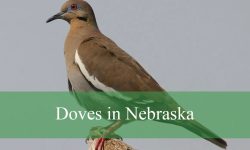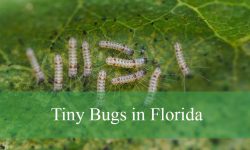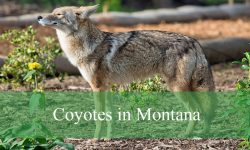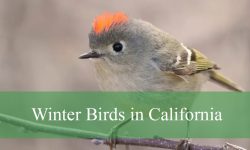With its subtropical heat and humidity, Louisiana offers perfect habitats for numerous lizard species. From agile Green Anoles climbing garden walls to sleek Glass Lizards gliding through grasslands, the state hosts an impressive diversity of both native and introduced species.
These reptiles play an important role in the local ecosystem by controlling insect populations and serving as prey for larger animals. Many are commonly seen in backyards, forests, and even urban neighborhoods, adapting well to Louisiana’s subtropical weather and varied landscapes.
In this guide, you’ll discover 15 types of lizards in Louisiana, complete with pictures and identification details. You’ll learn how to recognize each species, understand their habits, and appreciate how these fascinating reptiles contribute to the natural balance of the Bayou State.
Types of Lizards Found in Louisiana
Green Anole (Anolis carolinensis)
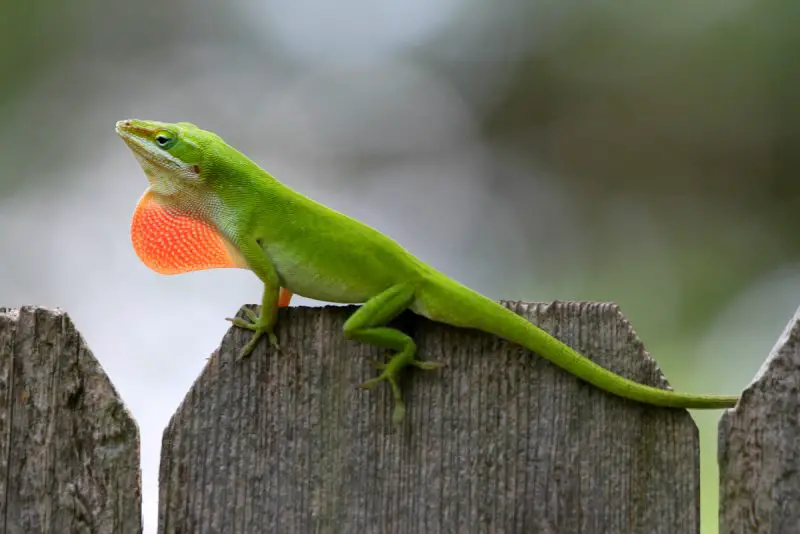
The Green Anole is Louisiana’s most familiar lizard, often seen darting across fences, walls, and tree trunks in both rural and urban settings. This small reptile measures about 5 to 8 inches in total length, including its slender tail. Its most distinctive feature is its ability to change color—from bright emerald green to a dull brown—depending on temperature, mood, and surroundings, which helps it blend into its environment and regulate body heat.
The Green Anole has a pointed snout and large, expressive eyes that can move independently, giving it an excellent field of vision. Males display a pinkish-red dewlap beneath their chin, which they extend during territorial or courtship displays. Their slender bodies and long tails allow them to move swiftly through vegetation and leap between branches with agility.
These lizards are skilled climbers, using adhesive toe pads to grip smooth surfaces. You’ll often find them basking in sunny spots during the day before retreating to shaded areas or hiding under leaves when temperatures rise. Their diet mainly consists of small insects such as flies, crickets, and beetles, which they catch using their quick reflexes and keen eyesight.
Native to the southeastern United States, Green Anoles thrive in warm, humid environments such as coastal plains, forests, and gardens. They are active mostly in spring and summer and can adapt well to human-modified landscapes, making them a common sight throughout Louisiana’s backyards and parks.
Brown Anole (Anolis sagrei)
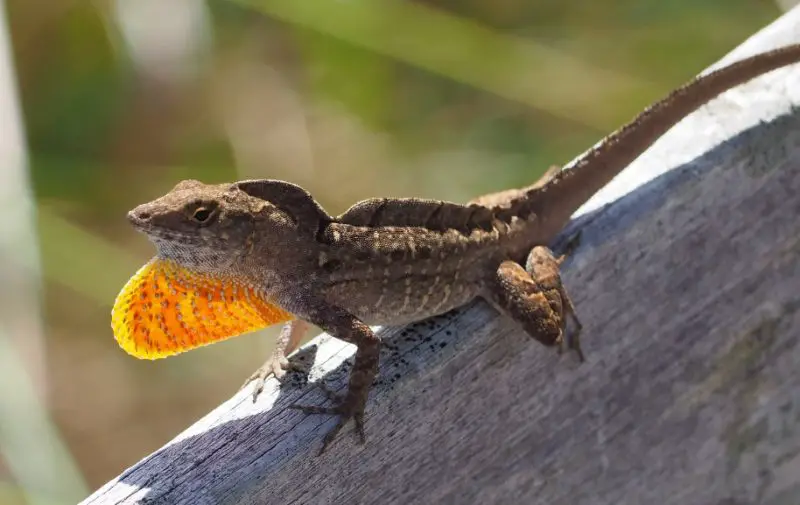
The Brown Anole is an introduced species in Louisiana, originally from Cuba and the Bahamas. This lizard has become increasingly common across southern parts of the state, where it competes with native anoles for space and food. Adults typically measure 5 to 9 inches long and have a brown or grayish-brown coloration with darker patterns or mottling along their backs.
Males have a distinctive red or orange dewlap edged with white, which they flare to attract females or intimidate rivals. The Brown Anole’s tail often breaks off easily when grabbed by a predator, a defense mechanism known as autotomy, allowing it to escape while the detached tail continues to twitch. Unlike the Green Anole, this species prefers staying close to the ground, often perching on rocks, walls, or low branches.
Behaviorally, the Brown Anole is more aggressive and territorial. Males will frequently chase away intruders and establish dominance within their territory. Their quick movements and keen eyesight help them capture insects and spiders efficiently. They are active during the day, especially in sunny conditions, and retreat into shaded or sheltered areas when threatened.
The rapid spread of the Brown Anole has caused a noticeable shift in local ecosystems. In areas where both species coexist, Green Anoles have been pushed higher into the trees while Brown Anoles dominate the ground level. Despite being an invasive species, they have adapted seamlessly to Louisiana’s subtropical climate and continue to expand their range northward.
Five-Lined Skink (Plestiodon fasciatus)
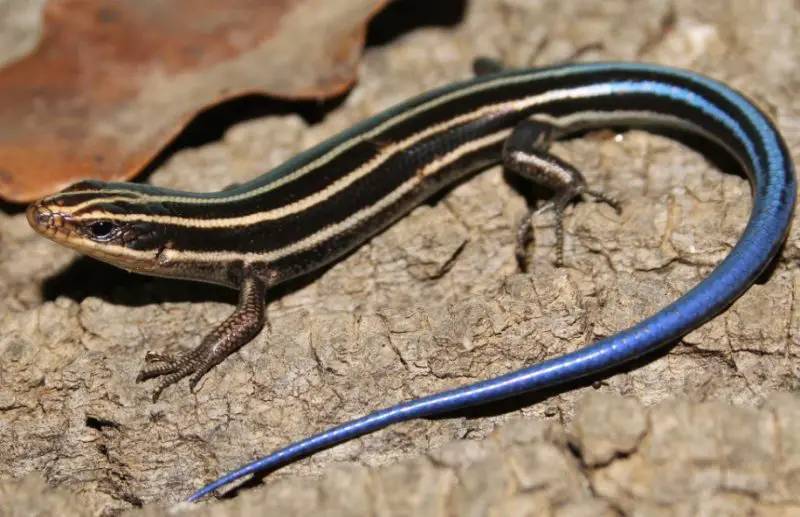
The Five-Lined Skink is one of the most easily recognized lizards in Louisiana due to its striking appearance. It typically grows between 5 and 8.5 inches long and features five narrow, light stripes running the length of its dark brown or black body. Juveniles are especially eye-catching, with vibrant blue tails that fade as they mature, serving as a distraction for predators.
These skinks are primarily insectivorous, feeding on beetles, crickets, and other small invertebrates found under logs and leaf litter. They use their strong limbs and smooth scales to move quickly through their forested habitats. When threatened, a Five-Lined Skink may detach its tail to escape, though it will eventually regenerate a shorter, duller replacement.
The species thrives in moist woodlands, near decaying logs, stumps, and other shaded areas that retain humidity. They prefer habitats with plenty of ground cover and loose soil for burrowing. In urban settings, they can sometimes be seen in gardens or around homes with heavy vegetation.
Native to much of the eastern United States, Five-Lined Skinks are widespread across Louisiana, especially in areas with mixed hardwood forests. They are diurnal, meaning they are most active during daylight hours, and often bask in sunlit spots before darting back into cover when disturbed.
Broad-Headed Skink (Plestiodon laticeps)
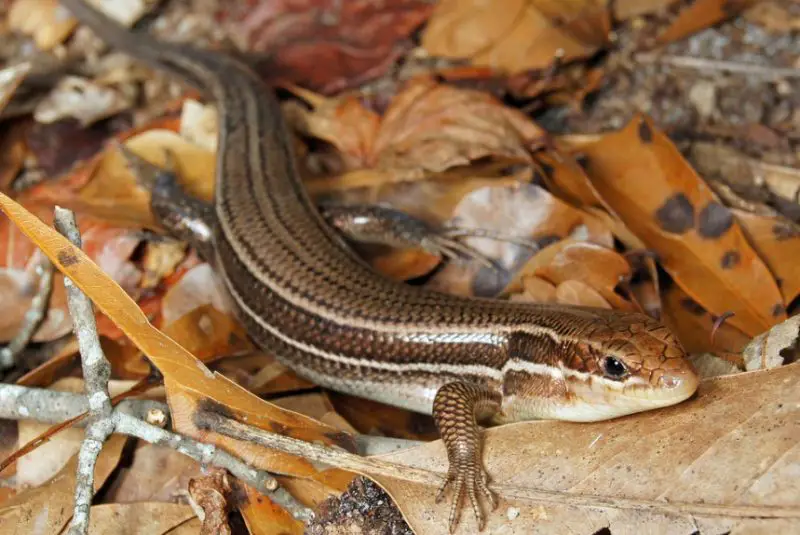
The Broad-Headed Skink stands out as one of Louisiana’s largest and most impressive lizards, often reaching lengths of up to 13 inches. Males develop broad, muscular heads and display vivid orange or red coloration during the breeding season, which gives the species its name. Females and juveniles, on the other hand, are usually brown or olive-colored with faint light stripes.
This species is primarily arboreal, spending much of its time climbing trees and hiding beneath bark, in tree hollows, or among fallen logs. Despite its size, the Broad-Headed Skink is an agile climber and can often be found basking on trunks or branches. Its strong jaws allow it to crush hard-shelled insects and spiders, its main sources of food.
During the breeding season, males become highly territorial and may fight for access to females, using head-bobbing displays and jaw-locking behavior. Females lay clutches of eggs in rotting logs or underground nests, guarding them until they hatch—an unusual trait among lizards. Hatchlings resemble juvenile Five-Lined Skinks, often with bright blue tails.
Native to Louisiana, this species is well adapted to both natural forests and suburban woodlots. It prefers warm, humid environments and is most active from spring through early fall. The Broad-Headed Skink’s combination of striking coloration and bold behavior makes it a fascinating part of Louisiana’s reptile diversity.
Ground Skink (Scincella lateralis)
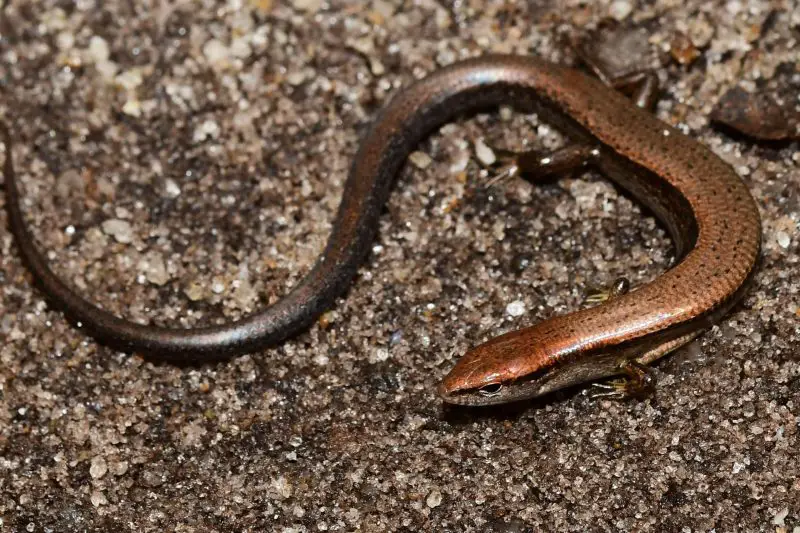
The Ground Skink, also known as the Little Brown Skink, is one of the smallest and most secretive lizards found in Louisiana. Adults typically measure only 3 to 5 inches in length and have smooth, shiny scales that give them a metallic bronze or copper appearance. Because of their slender bodies and reduced limbs, they are often mistaken for small snakes when they move quickly through leaf litter.
Unlike many lizards that climb or bask in open areas, Ground Skinks are fossorial, meaning they spend most of their lives close to or beneath the soil surface. They thrive in moist, shaded environments such as forest floors, gardens, and decaying wood piles. Their movements are swift and serpentine as they wriggle through dead leaves and loose soil in search of tiny insects, spiders, and other invertebrates.
Ground Skinks are highly sensitive to vibration and light, retreating instantly into cover when disturbed. Their secretive nature makes them difficult to observe, though they are widespread throughout Louisiana. Their small size and camouflage coloration help protect them from predators, while their ability to shed their tail provides an added escape mechanism.
Native to the southeastern United States, Ground Skinks play a valuable ecological role by controlling insect populations and recycling organic material within forest ecosystems. They remain active year-round in warmer regions but may become less visible during cooler or drier periods. Despite their elusive behavior, they are among the most abundant lizards in the state.
Six-Lined Racerunner (Aspidoscelis sexlineatus)
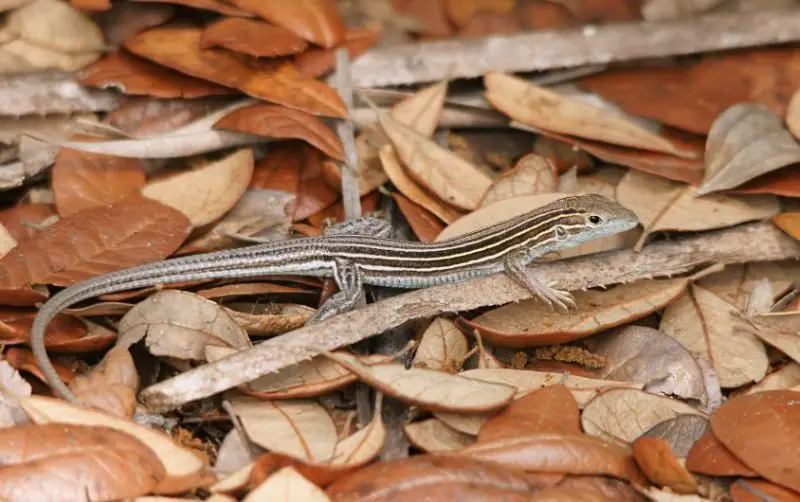
The Six-Lined Racerunner is one of Louisiana’s most energetic and fast-moving lizards, capable of sprinting at remarkable speeds across open terrain. Measuring about 6 to 10 inches long, it has a sleek, slender body covered in smooth scales and a long, whip-like tail that aids in balance during rapid movement. Its most recognizable feature is the six distinct pale yellow or white stripes that run lengthwise down its dark greenish-black or brown body.
This species is diurnal, highly active during the hottest parts of the day when most other reptiles seek shade. Its quick reflexes and keen eyesight make it a skillful hunter of small insects, spiders, and other invertebrates. When startled, the Six-Lined Racerunner can dart away in an instant, often disappearing into grass or under debris before predators can react. It relies heavily on its speed and camouflage rather than hiding or climbing.
You’ll often find these lizards in open, sandy, or grassy areas such as fields, dunes, and roadsides. They prefer dry, well-drained soils where they can burrow or take refuge in crevices. They’re also commonly seen in pine savannas and along the edges of woodlands, where sunlight is plentiful.
Native to the southern and central United States, the Six-Lined Racerunner thrives in Louisiana’s warm climate. It’s most active from late spring through early fall, basking in full sun and retreating underground during cool or rainy weather. Their alert behavior and striking stripes make them a captivating sight for anyone exploring Louisiana’s open landscapes.
Mediterranean House Gecko (Hemidactylus turcicus)
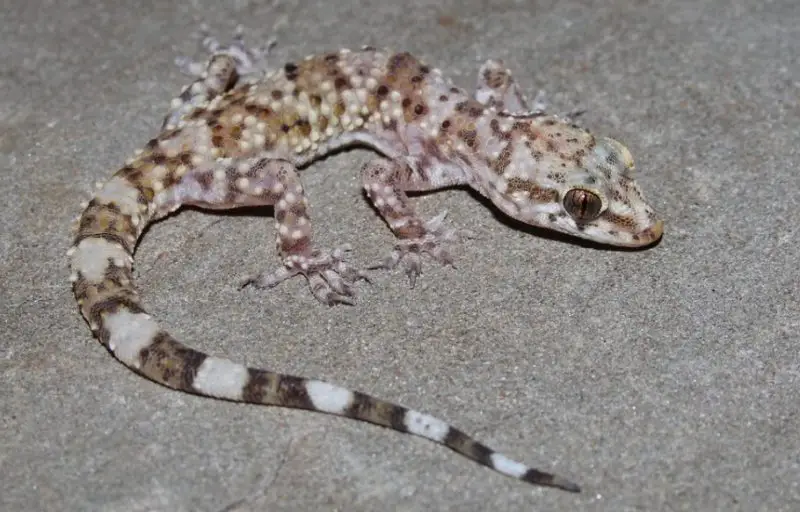
The Mediterranean House Gecko is a small, nocturnal lizard that has successfully adapted to life alongside humans in Louisiana. Originally native to southern Europe and parts of the Middle East, it has spread across the southern United States through human activity. Adults typically reach about 4 to 5 inches in length, with soft, translucent skin ranging from pale gray to light brown, often covered in small bumps or warts.
One of its most distinctive features is its large, lidless eyes with vertical pupils, perfectly adapted for low-light hunting. These geckos are most active at night and are frequently seen near porch lights, windows, and walls where insects gather. Their adhesive toe pads allow them to climb smooth vertical surfaces and even move upside down across ceilings.
Unlike many native lizards, Mediterranean House Geckos are completely harmless and beneficial to humans, as they help control insect populations around homes and buildings. They emit faint chirping calls, especially during mating season, which can sometimes be heard on quiet nights. During the day, they hide in cracks, under eaves, or behind shutters to avoid predators and sunlight.
In Louisiana, this species has become well established in urban and suburban areas thanks to the state’s warm, humid climate. It reproduces readily and can be found year-round in coastal and inland cities. Their presence is a common feature of nighttime life in the South, making them one of Louisiana’s most recognizable introduced reptiles.
Texas Spotted Whiptail (Aspidoscelis gularis)
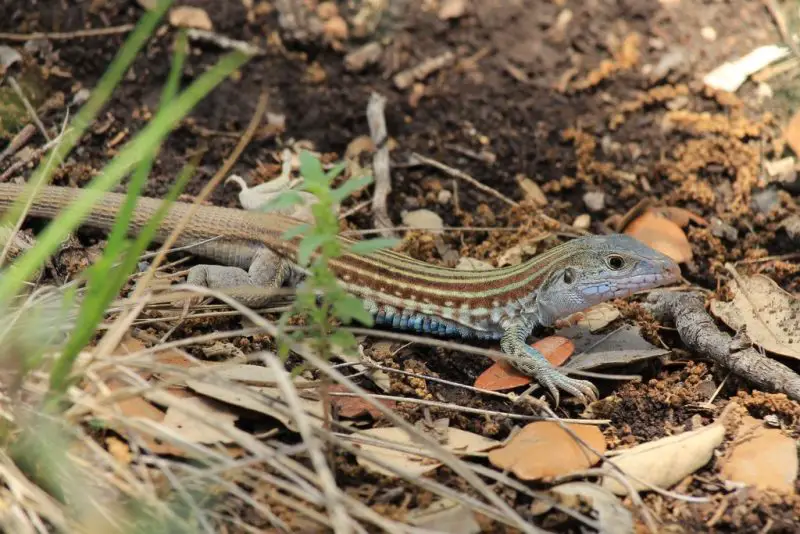
The Texas Spotted Whiptail is a striking and energetic lizard found in western Louisiana, particularly near the Texas border. It has a long, slender body that can reach 10 to 12 inches in length, with an exceptionally long tail often making up two-thirds of its total size. Its coloration is typically brown or olive with light stripes and distinct white or yellow spots running along its sides, giving it a speckled appearance.
This species is known for its speed and constant movement. It spends its days actively foraging for insects, spiders, and small arthropods, using its quick reflexes to snatch prey from the ground. The Texas Spotted Whiptail rarely stays still for long and often scurries between sunny patches to regulate its body temperature. When alarmed, it can vanish in seconds into vegetation or loose soil.
Its preferred habitats include dry, open areas such as prairies, grasslands, and sandy fields. It also thrives in rocky environments and open woodlands with sparse ground cover. The species is diurnal, most active during warm daylight hours, and seeks shelter under rocks or debris when temperatures soar too high.
Native to Texas and northern Mexico, the Texas Spotted Whiptail has extended its range into western Louisiana, where it adapts well to similar dry habitats. Its combination of speed, alertness, and distinctive pattern makes it one of the more eye-catching reptiles in the region.
Prairie Lizard (Sceloporus consobrinus)
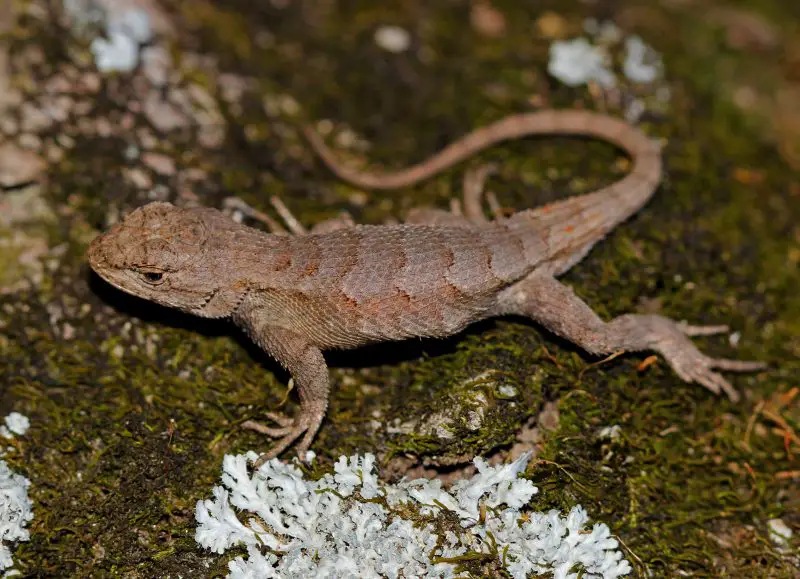
The Prairie Lizard, also known as the Southern Fence Lizard, is a small to medium-sized species measuring about 4 to 7 inches in length. It has a robust body covered in rough, spiny scales that give it a textured appearance. Its coloration ranges from gray to brown, often with darker crossbands or blotches that blend seamlessly into bark, rocks, or soil. Males often display blue patches on the belly and throat, particularly vivid during breeding season.
These lizards are expert climbers and baskers, frequently seen perched on fence posts, tree trunks, or fallen logs soaking up the sun. They are diurnal, becoming most active during warm, sunny days and retreating into crevices or under debris at night. Prairie Lizards rely on both speed and camouflage to escape predators such as birds and snakes.
In terms of behavior, males are territorial and use push-ups and head-bobbing gestures to ward off rivals or attract females. Their diet consists mainly of small insects, ants, and spiders. They are quick hunters, relying on short bursts of movement to capture prey on the ground or on vertical surfaces.
Common in northern and central Louisiana, Prairie Lizards prefer sunny, open woodlands, prairies, and rocky outcrops. They are well adapted to areas with moderate human disturbance, often inhabiting parks, gardens, and rural fences. Their rugged appearance and characteristic basking behavior make them a familiar sight in many parts of the state.
Eastern Glass Lizard (Ophisaurus ventralis)
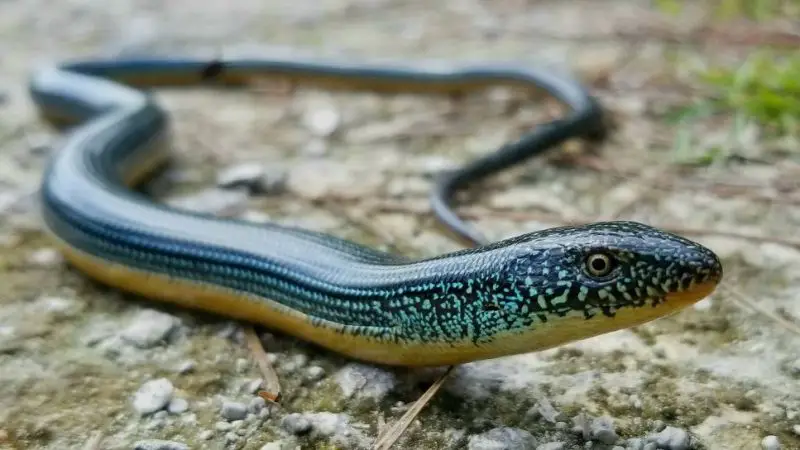
The Eastern Glass Lizard is a fascinating species that often confuses observers due to its snake-like appearance. Unlike snakes, however, this legless lizard has movable eyelids and external ear openings—key traits that set it apart. It typically reaches lengths between 18 and 43 inches, with a long, slender body covered in shiny, glassy scales that give it a smooth, reflective look.
This lizard’s name comes from its remarkable ability to detach its tail when threatened. The tail can break into several pieces, resembling shattered glass, which distracts predators while the lizard escapes. Although the tail eventually regenerates, it’s usually shorter and duller than the original. The body color varies from greenish-brown to tan, sometimes with faint stripes along the sides.
Eastern Glass Lizards are most commonly found in grassy, sandy, or scrubby areas such as pine flatwoods, meadows, and coastal dunes. They spend much of their time hidden under debris, leaf litter, or burrowed in the soil, emerging during warm weather to hunt insects, snails, and small vertebrates. Despite lacking legs, they move quickly by undulating their bodies in a serpentine fashion.
Native to the southeastern United States, this species is well adapted to Louisiana’s coastal and inland habitats. They prefer moist but well-drained environments and are most active during spring and summer. Though elusive, the Eastern Glass Lizard plays an important role in controlling pest populations and adds to the state’s diverse reptile fauna.
Slender Glass Lizard (Ophisaurus attenuatus)
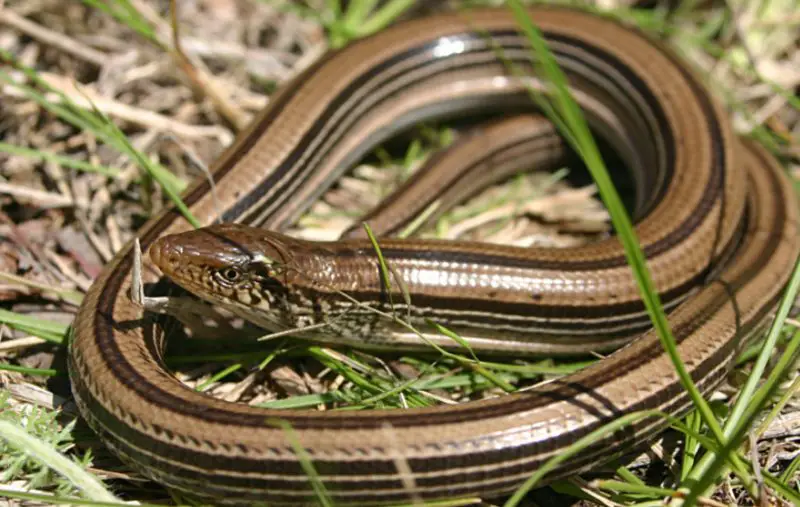
The Slender Glass Lizard is another legless reptile found in Louisiana, resembling a snake at first glance but easily distinguished by its movable eyelids and visible ear openings. This species is noticeably more slender and shorter than the Eastern Glass Lizard, usually measuring 22 to 36 inches in length. Its body is marked with a series of dark brown or black stripes running the length of its tan or light brown body, which helps it blend into dry, grassy environments.
These lizards are elusive and rarely seen except when disturbed or crossing roads after rainfall. They spend most of their time hidden under leaves, logs, or in burrows, emerging mainly during the warmer months. When threatened, the Slender Glass Lizard can shed its tail in multiple pieces as a distraction—a trait that gives all “glass lizards” their common name. The tail eventually regrows, though never to its full length or color.
Their diet consists primarily of insects, spiders, and small invertebrates, which they locate using their keen sense of smell. Despite their lack of limbs, they are surprisingly agile, moving with a sinuous, flowing motion through grass and leaf litter. Because they are ground-dwellers, they rely on camouflage and speed for survival rather than confrontation.
In Louisiana, the Slender Glass Lizard is most commonly found in dry pine woodlands, open prairies, and sandy grasslands. It prefers well-drained habitats and is more active during warm, sunny days. Although infrequently encountered, it plays an important ecological role by helping regulate insect populations within these dry environments.
Coal Skink (Plestiodon anthracinus)
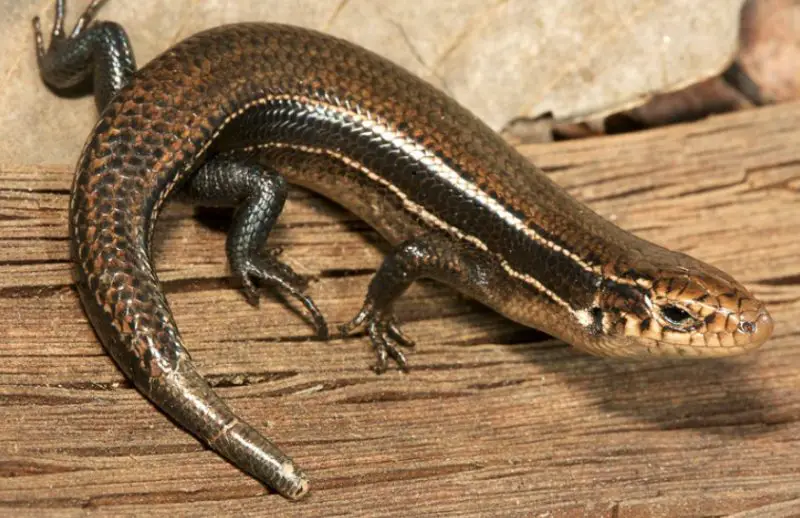
The Coal Skink is a small, secretive species of skink that prefers the moist, shaded habitats of northern and central Louisiana. Adults typically grow between 4 and 7 inches in length and are easily recognized by their glossy dark brown or black coloration and two distinct light stripes running along each side of the body. Their scales are smooth and shiny, giving them a polished, almost metallic look under sunlight.
Unlike many other skinks, the Coal Skink avoids dry areas and instead thrives near springs, streams, and damp hillsides where leaf litter and logs provide plenty of cover. They spend much of their time hidden beneath rocks or forest debris, coming out mainly to hunt small insects, spiders, and other invertebrates. Their secretive lifestyle makes them difficult to spot, but they are fairly common in suitable habitats.
Coal Skinks are known for their quick reflexes and ability to drop their tails when threatened. The detached tail wriggles violently, distracting predators and allowing the lizard to escape. This adaptation, along with their dark coloration and preference for secluded areas, helps them remain safe from larger animals.
Though their distribution in Louisiana is somewhat localized, they are more frequently encountered in the northern and central parts of the state. Their presence is a sign of a healthy, moist forest ecosystem, and they contribute to insect population control in these shaded, humid environments.
Western Green Anole (Anolis carolinensis seminolus)
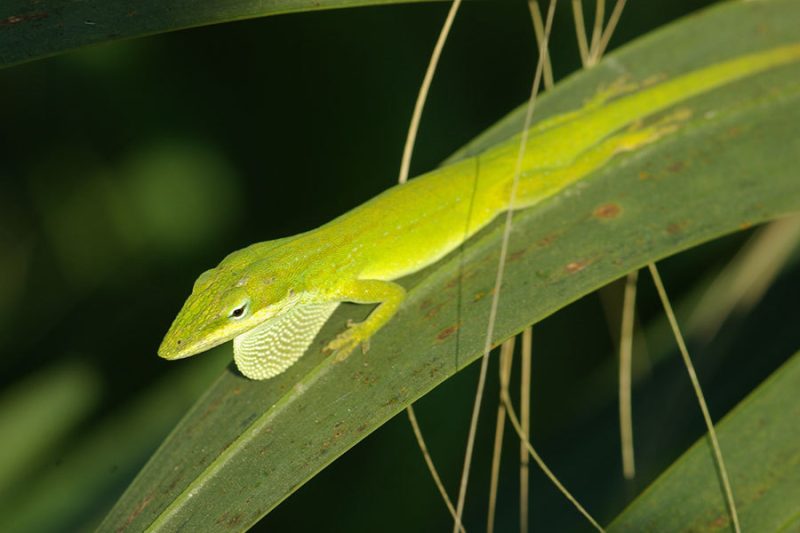
The Western Green Anole is a coastal subspecies of the Green Anole, found primarily in southern Louisiana’s coastal and marshy regions. It shares many of the same characteristics as its close relative, including the ability to change color from bright green to brown depending on its environment, mood, and temperature. However, it tends to be slightly smaller in size, averaging 4 to 7 inches in length, and displays a more streamlined body adapted to humid, salty conditions.
This lizard is highly adaptable, often seen clinging to tall grasses, shrubs, and mangrove vegetation along the coast. Its adhesive toe pads allow it to navigate slippery surfaces and coastal plants with ease. Males possess a pinkish-red dewlap, which they extend to signal territory or attract mates, especially during the warmer months when they are most active.
Western Green Anoles are diurnal and spend much of their day basking in sunlight before retreating to shaded vegetation during peak heat. They feed primarily on small insects, spiders, and other arthropods, contributing to natural pest control in their habitats. Their keen eyesight and fast movements make them efficient hunters in dense vegetation.
In Louisiana, this subspecies is most abundant in coastal marshes and barrier island habitats, where it tolerates higher salinity than other anoles. Its presence in these areas reflects its ability to adapt to environmental challenges, making it a resilient and ecologically valuable reptile along Louisiana’s Gulf Coast.
Little Brown Skink (Scincella lateralis)
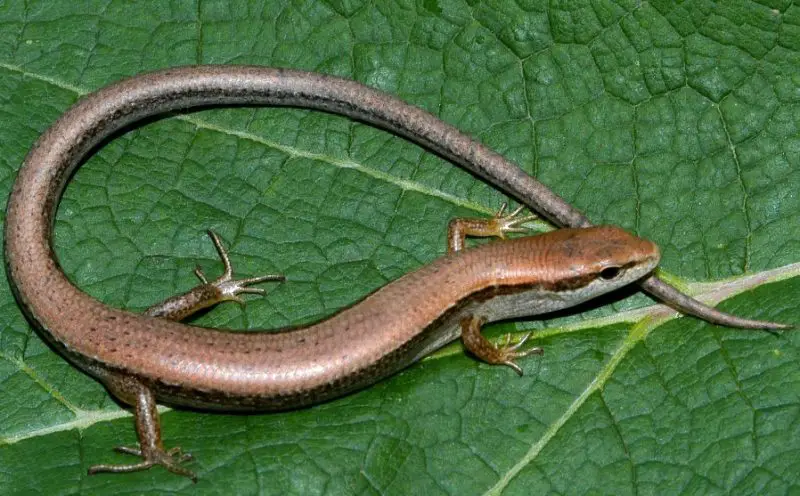
The Little Brown Skink, closely related to the Ground Skink, is one of Louisiana’s most common and widespread lizards. Measuring only 3 to 5 inches long, it has a smooth, bronze or copper-colored body with a glossy, reflective sheen that gives it a metallic appearance. Its diminutive size and sleek form allow it to move effortlessly through layers of leaf litter on the forest floor.
This species is highly secretive and fossorial, meaning it spends most of its life hidden beneath the surface—under leaves, logs, and loose soil. It feeds primarily on tiny insects, spiders, and other soil-dwelling invertebrates, playing a crucial role in controlling pest populations. Its movements are rapid and serpentine, and it can shed its tail if caught by a predator, a defensive adaptation that helps it escape unharmed.
The Little Brown Skink prefers moist, shaded environments, such as deciduous woodlands, pine forests, and gardens. It thrives in areas with abundant ground cover that offers both protection and humidity. Because of its secretive habits, it is rarely seen in the open, though it may occasionally appear after rain or during yard work.
In Louisiana, it is common across both rural and suburban regions and is often one of the first reptiles to recolonize disturbed or regenerating woodlands. Its adaptability to different habitats and quiet presence make it a subtle but essential part of Louisiana’s forest ecosystems.
Cuban Brown Anole (Anolis sagrei sagrei)
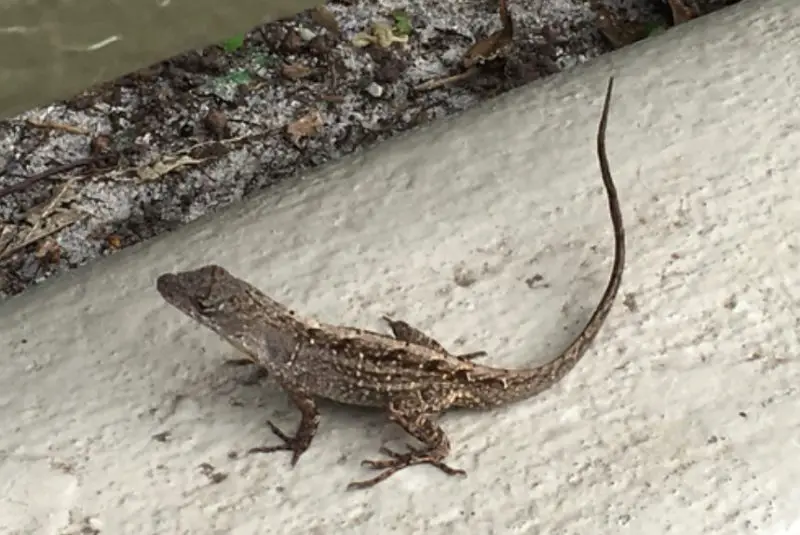
The Cuban Brown Anole is a subspecies of the Brown Anole, an invasive reptile that has become firmly established in Louisiana’s urban and suburban environments. Originally from Cuba and the Bahamas, this small, agile lizard typically measures 5 to 8 inches long and has a brown or grayish-brown coloration with a pattern of darker markings and spots along its back. Males are distinguished by their vibrant reddish-orange dewlap bordered in white.
This species is highly adaptable and thrives in disturbed habitats such as gardens, walls, parking lots, and fences. It spends much of its time near the ground but is an excellent climber when searching for food or escaping predators. Aggressive and territorial, Cuban Brown Anoles frequently display head-bobbing and push-up behaviors to warn rivals and attract mates.
Their diet consists mostly of insects, spiders, and other small invertebrates, which they actively hunt during the day. Unlike native anoles, they tolerate higher temperatures and drier conditions, allowing them to dominate lower vegetation and outcompete local species for resources. This competitive edge has caused native Green Anoles to move higher into trees and shrubs to avoid direct conflict.
Despite being non-native, the Cuban Brown Anole is now a permanent part of Louisiana’s ecosystems, particularly in cities and towns. Its adaptability, high reproductive rate, and resilience make it one of the most successful reptile colonizers in the region, transforming the balance of Louisiana’s small lizard communities.
FAQs about Lizards in Louisiana
What types of lizards can you find in Louisiana?
Louisiana is home to a diverse range of lizards, including native and introduced species. Common examples include the Green Anole, Brown Anole, Five-Lined Skink, Broad-Headed Skink, Ground Skink, Six-Lined Racerunner, and the Eastern Glass Lizard. In addition, several non-native species like the Mediterranean House Gecko and Cuban Brown Anole have become permanent residents in the state. These reptiles inhabit a wide variety of environments—from pine forests and wetlands to suburban gardens and coastal regions.
Are there legless lizards in Louisiana?
Yes, Louisiana is home to legless lizards such as the Eastern Glass Lizard and the Slender Glass Lizard. Despite their snake-like appearance, they differ from snakes in key ways: they have movable eyelids, external ear openings, and detachable tails. These lizards live primarily in grassy or sandy habitats where they burrow under debris and leaf litter. Their tails can break into multiple pieces when threatened, a defense mechanism that gives them their name “glass” lizards.
Are any of Louisiana’s lizards dangerous to humans?
No, none of the lizards found in Louisiana are dangerous to humans. They are non-venomous, harmless, and typically avoid contact with people. In fact, most of them are beneficial because they help control insect populations. Species like the Green Anole, Brown Anole, and Mediterranean House Gecko are often seen around homes and gardens catching flies, mosquitoes, and other pests.
What do Louisiana lizards eat?
Most Louisiana lizards are insectivorous, meaning they primarily eat insects, spiders, and small invertebrates. Species such as Anoles and Skinks hunt actively during the day, using their sharp vision to detect movement. Some larger lizards, like the Broad-Headed Skink, may also consume snails, smaller lizards, or even small frogs. Their diet helps maintain balance in local ecosystems by keeping insect populations under control.
Where do lizards in Louisiana live?
Lizards in Louisiana occupy a range of habitats, depending on the species. Anoles are often found in urban and suburban settings—on fences, trees, and walls—while Skinks prefer woodlands, leaf litter, and decaying logs. Racerunners and Whiptails favor open, sandy areas such as fields and grasslands. The Glass Lizards live in grassy, coastal, or pine habitats and spend most of their time hidden underground or under debris.
What is the most common lizard in Louisiana?
The Green Anole (Anolis carolinensis) is considered the most common and recognizable lizard in Louisiana. It is native to the southeastern United States and well adapted to the state’s humid climate. Green Anoles are often seen around homes, gardens, and trees, where they change color between green and brown depending on their surroundings. Their friendly presence makes them a familiar sight across much of Louisiana.
How can you tell the difference between Green and Brown Anoles?
The easiest way to tell them apart is by their color and behavior. The Green Anole can change between bright green and brown and usually prefers higher perches like shrubs and trees. The Brown Anole, on the other hand, is typically brown with dark markings and a red-orange dewlap. It is more aggressive and tends to stay near the ground or low vegetation. When both species share the same area, Brown Anoles often push Green Anoles into higher habitats.
Do any Louisiana lizards hibernate?
Lizards in Louisiana do not hibernate in the traditional sense, but many enter a state of brumation during cold months. Brumation is a reptilian form of dormancy where the lizard becomes less active, eating little and spending most of its time hidden under logs, soil, or leaf litter. Species such as Skinks and Anoles will remain inactive during winter and resume normal activity when temperatures rise in spring.
Are lizards beneficial to have around homes and gardens?
Absolutely. Lizards are highly beneficial because they act as natural pest control agents, feeding on mosquitoes, flies, beetles, crickets, and other small insects. Species like the Green Anole and House Gecko are especially helpful in keeping bug populations in check around outdoor lights and garden areas. They pose no threat to humans or pets and contribute to a balanced ecosystem.
Are there invasive lizards in Louisiana?
Yes, a few invasive lizard species have established populations in Louisiana, with the most notable being the Brown Anole (Anolis sagrei) and the Mediterranean House Gecko (Hemidactylus turcicus). These species originated outside the U.S. and were introduced accidentally through cargo shipments and ornamental plant trade. Although they compete with native species for food and habitat, they are now widespread and form part of the local ecosystem.
How do Louisiana lizards reproduce?
Most Louisiana lizards reproduce during the warmer months, typically from spring through summer. Males display colorful dewlaps, head-bobs, and territorial behaviors to attract females. After mating, females lay one to several small, leathery eggs in moist soil, leaf litter, or rotting wood. Hatchlings emerge within a few weeks and are fully independent from birth. Species such as Skinks may show limited parental care, guarding their eggs until they hatch.
What should you do if you find a lizard in your house?
Finding a lizard inside your home is common, especially in Louisiana’s warm, humid climate. If you encounter one, there’s no need to panic—it’s harmless and likely just chasing insects. You can gently guide it outside using a small container or leave a door open to let it exit on its own. Lizards help control pests like flies and ants, so their presence is actually beneficial.

